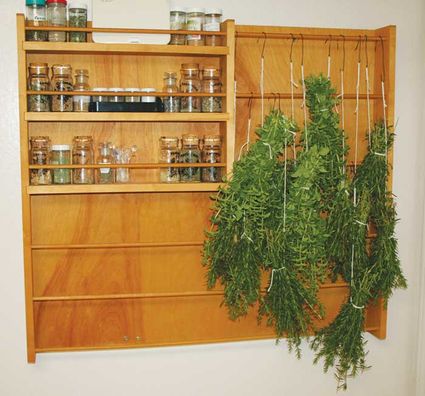Preserving Edible Herbs
Herb Snips
There are a variety of ways to preserve and store edible herbs, but let us take a step back. Some important things can be said about harvesting that will provide herbs of high quality. Early morning is best before the essential oils are dried by the sunshine. The leaves are tastiest before the plant flowers, but fresh flowers are delicious and a serving attraction. Do not use leaves or flowers that have dried on the plant. They are tasteless or worse!
Use sharp scissors or your nails to pinch off the leaves or cut just above a set of leaves. There are excellent cutting tools specifically for herbs in stores and on line. Never take more than a third of plants leaves or it may falter. Remember photosynthesis is the life giver and the plant needs adequate leaves to sustain it. Shape your plant as you harvest! Plants that send up long stalks like parsley and chives should be cut at ground level. This allows the tender shoots to develop.
Give your herb harvest a quick rinse in cool water. Drain and dry by spreading on a clean cloth\towel. The traditional method of preservation is my favorite. It is so Jane Austen! You make small, loose bundles of the herb with the heads down. Tie at the stem end and hang upside down in a dry, shady, airy place. (Photo). If you want to collect seed heads or are concerned about dust you can put the bundle in a small paper bag that is secured with the original tie string. They will dry in about two weeks.
If you are impatient, you can spread the leaves on a cookie sheet and bake them in your oven on the lowest temperature while leaving the door open. It will be ready in minutes, but not as tasty as the air drying method! Microwaving is another quickie technique. Place a cup of clean and dried leaves between paper towels and microwave on high in one minute intervals. Turn them over. Do this every minute until they are brittle and crumble easily. Not too long or they will become scorched and taste like "store bought". Oh no! Chopped roots and thick stems can be dried the same way. Put them in containers and grind as needed.
To dry seeds such as sunflowers, coriander, parsley and fennel allow the ripe flower heads to sit in a dark, dry, airy place. Air circulation is important for quick drying. I suggest you put them on a cookie rack that is covered with screening or cheese cloth.
Freezing herbs maintains flavor and they can be used as if fresh in cooked foods. Not so good in salads! Large leaves like basil and sage are best frozen individually and stored in bags in the freezer. Small leaves like thyme can be frozen with the sprigs intact. Crumble in recipes as needed. Basil is often blanched to preserve color but scent and flavor are sacrificed.
Herbs can be minced, whole or made into a paste and put in ice cube trays. In the case of paste you add a little oil and it can be frozen in individual measures. I form them into 1 tablespoon balls. A handy size for recipes for four people.
For short term storage, bouquets of herbs can be kept in a glass with a little water in the refrigerator. Great deodorizer as well! Sprigs of herbs like thyme can be rinsed, dried and wrapped in paper towels. Place them in a plastic bag and store in the refrigerator.
Enjoy an herbally delightful preservation venture. Thanks to Dixie Coutant for your interest in this important topic. Hope this helps. Keep the suggestions coming! Check my website at http://www.herbbasket.net for upcoming classes.




